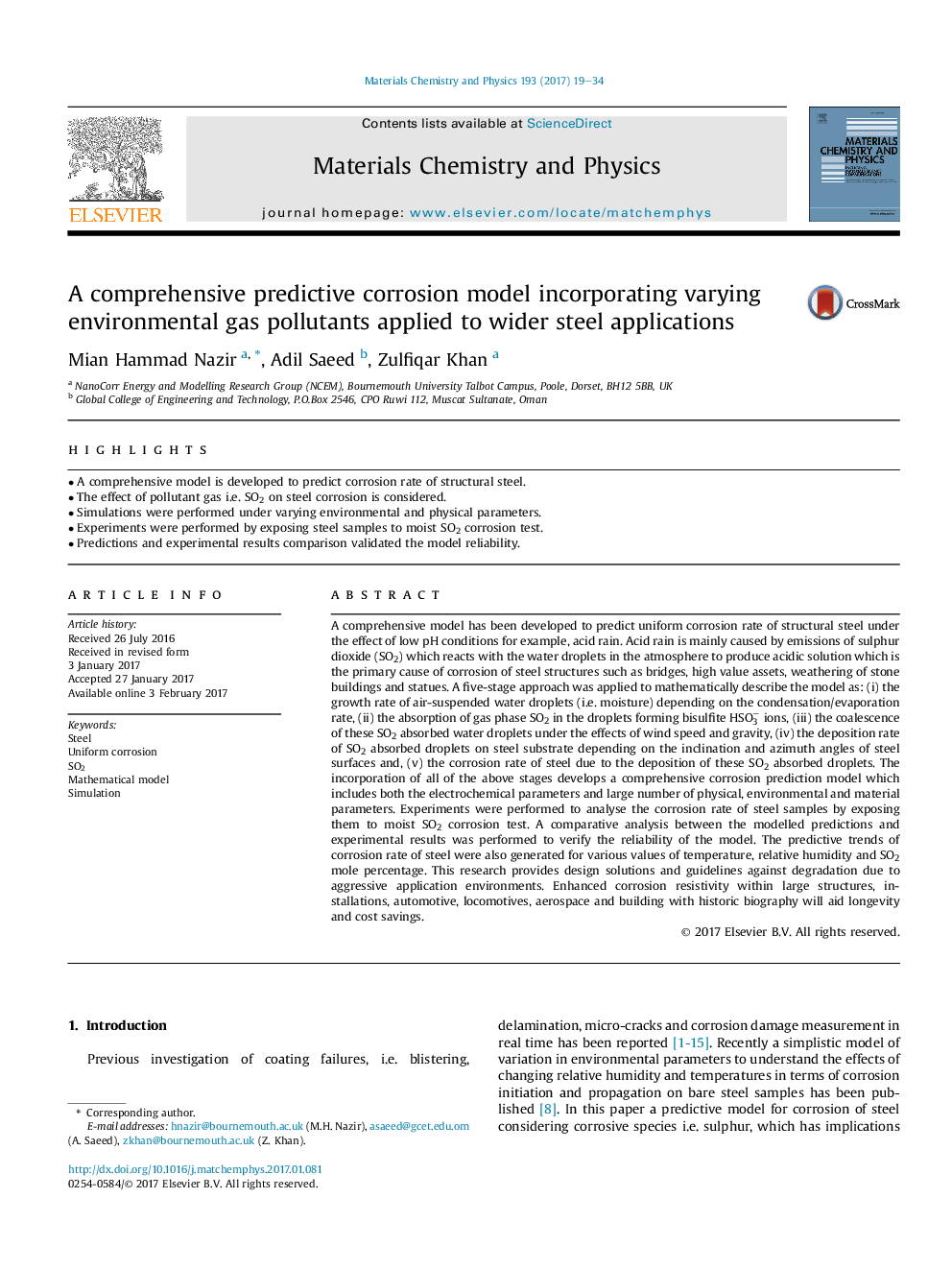| Article ID | Journal | Published Year | Pages | File Type |
|---|---|---|---|---|
| 5448056 | Materials Chemistry and Physics | 2017 | 16 Pages |
Abstract
A comprehensive model has been developed to predict uniform corrosion rate of structural steel under the effect of low pH conditions for example, acid rain. Acid rain is mainly caused by emissions of sulphur dioxide (SO2) which reacts with the water droplets in the atmosphere to produce acidic solution which is the primary cause of corrosion of steel structures such as bridges, high value assets, weathering of stone buildings and statues. A five-stage approach was applied to mathematically describe the model as: (i) the growth rate of air-suspended water droplets (i.e. moisture) depending on the condensation/evaporation rate, (ii) the absorption of gas phase SO2 in the droplets forming bisulfite HSO3â ions, (iii) the coalescence of these SO2 absorbed water droplets under the effects of wind speed and gravity, (iv) the deposition rate of SO2 absorbed droplets on steel substrate depending on the inclination and azimuth angles of steel surfaces and, (v) the corrosion rate of steel due to the deposition of these SO2 absorbed droplets. The incorporation of all of the above stages develops a comprehensive corrosion prediction model which includes both the electrochemical parameters and large number of physical, environmental and material parameters. Experiments were performed to analyse the corrosion rate of steel samples by exposing them to moist SO2 corrosion test. A comparative analysis between the modelled predictions and experimental results was performed to verify the reliability of the model. The predictive trends of corrosion rate of steel were also generated for various values of temperature, relative humidity and SO2 mole percentage. This research provides design solutions and guidelines against degradation due to aggressive application environments. Enhanced corrosion resistivity within large structures, installations, automotive, locomotives, aerospace and building with historic biography will aid longevity and cost savings.
Related Topics
Physical Sciences and Engineering
Materials Science
Electronic, Optical and Magnetic Materials
Authors
Mian Hammad Nazir, Adil Saeed, Zulfiqar Khan,
